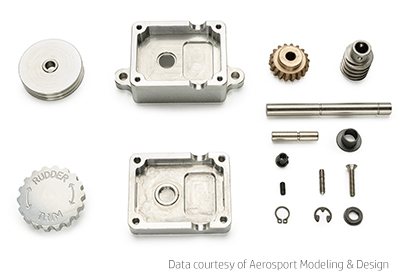|
3D PRINTING RUDDER TRIM SYSTEM HELPS REDUCE NUMBER OF PARTS
|
|
|
Aerosport Modeling & Design, Inc. was established in September 1996.
Since the beginning, they have strived to produce the highest quality prototypes,
appearance models, working models, and machined parts.
Aerosport has served thousands of satisfied customers, many of which are in the
following industries: automotive, medical, electronic, military,
aviation, and consumer products.
|
|
|
THE CHALLENGE
|
|
Aerosport Modeling redesigned a feature of their instrument panel—the rudder trim system—to reduce the need to manufacture various parts and to decrease assembly time. With the help of HP Multi Jet Fusion technology, they converted the entire system from a machined and standard assembly of 26 parts to a four-part assembly that is 3D printed on demand without the need to buy or machine long-run productions of each metallic part.
|
RESULTS
|
|
INDUSTRY
Military, Defence and Aerospace
SECTOR
Aircrafts
MATERIAL
HP 3D High Reusability1 PA 12
POST-PROCESSING
Bead blasting
Dyed in black
|
|
|
With the help of HP Multi Jet Fusion technology, Aerosport Modeling achieved:
|
|
|
-
Parts reduction:
Traditional manufacturing required the assembly of 26 different parts, but HP MJF technology requires only four parts for assembly.

Traditional manufacturing: Assembly of 26 different
Machines and standard parts
|

Additive Manufacturing: 3D printed assembly reduced to only four 3D printed parts
|
|
|
|
|
|
|
1. Based on using recommended packing densities and compared to selective laser sintering (SLS)
technology, offers excellent reusability without sacrificing mechanical performance. Tested
according to ASTM D638, ASTM D256, ASTM D790, and ASTM D648 and using a 3D scanner for
dimensional accuracy. Testing monitored using statistical process controls. HP Jet Fusion 3D Printing
Solutions using HP 3D High Reusability PA 12 provide up to 80% post-production surplus powder
reusability, producing functional parts batch after batch. For testing, material is aged in real printing
conditions and powder is tracked by generations (worst case for reusability). Parts are then made from
each generation and tested for mechanical properties and accuracy.
|
|